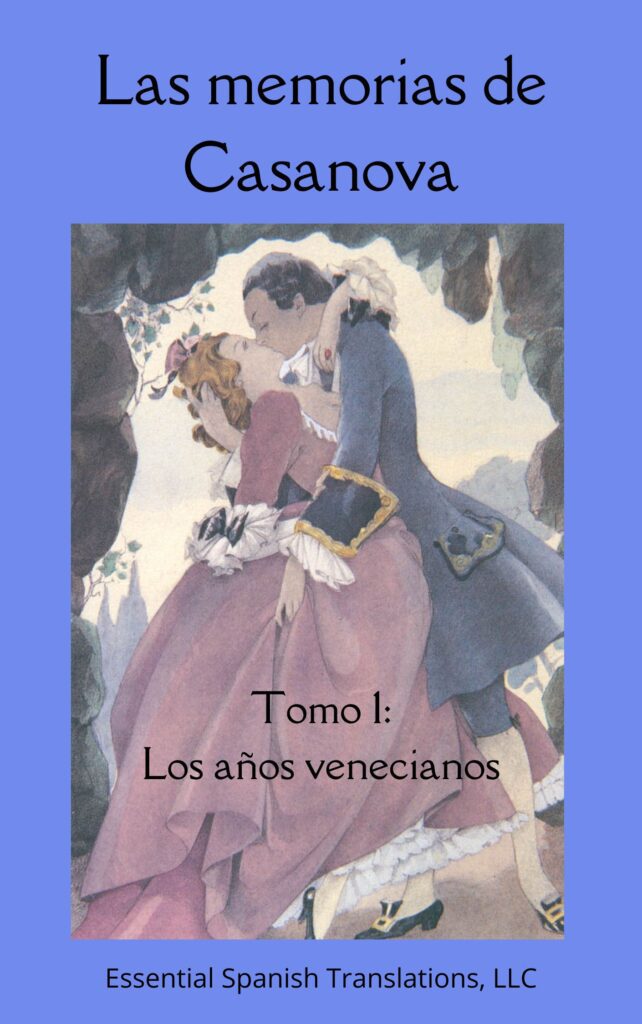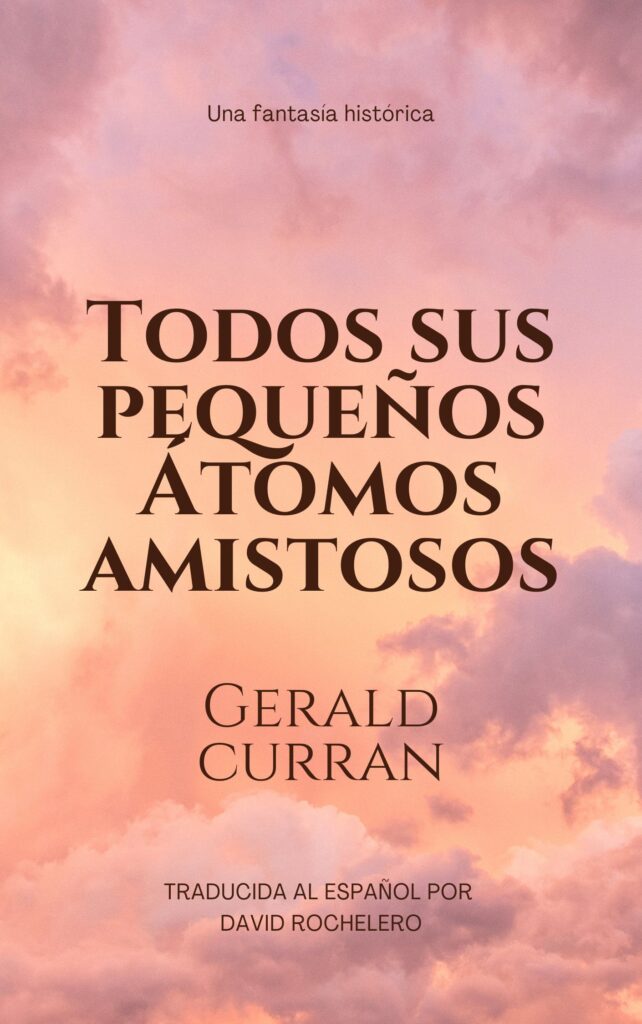ÉSETE — A Range of Editing Services Depending on the Client’s Needs

Professional Bilingual Developmental Editing for You
Developmental editing is a form of editing that focuses on the structure, organization, and development of a text. It goes beyond surface-level editing to look at how the content supports the overall argument or message of the text. Developmental editors work with authors to refine their ideas, organize their material into an effective format and structure, create strong transitions, and rewrite or revise sections as needed. They may also suggest changes in tone or style to make the work more readable and engaging.
Developmental editing refers to editing that aims to improve the content and overall structure of a manuscript. This is very different from the steps that follow and which I will be explaining soon — stylistic (line) editing, copy editing, and proofreading — types of editing that ensure that a manuscript’s grammar, punctuation, and spelling are in accordance with rules codified in reference books such as the Chicago Manual of Style and The AP Stylebook.
As mentioned above, developmental editing takes on topics such as pacing, plot, characterization, and setting. There are no set rules to abide by.
Developmental editors draw upon their instincts, experience, and love of reading — and, hence, good editing — to help a manuscript reach its fullest potential. For authors, one of the most difficult parts of experiencing the editing process is cutting sentences and even whole passages out of their manuscript, but that’s what a developmental edit is for.
Most published books go through at least one round of developmental editing. It is not for the fainthearted, though, since it can lead to major changes in a book. Characters can be changed or merged; entire plots can be tossed out; settings can change, and so forth. But, in the end, it’s all worth it. Books that haven’t gone through developmental editing can seem unwieldy and lack focus.
After the developmental edit has been completed is where my other steps, line editing, copy editing, and proofreading, come into play. I am what is referred to as an “immersion” editor — I really get into my work, your book and your characters.
When I am hired to do a stylistic or line edit, I do those, as well as a thorough copy edit, leaving just a light proofread to be done.
When I am hired to do a copy edit, as I just mentioned, I do a thorough job.
If a proofread is all you need, I will catch any errors that slipped through the cracks in the previous steps.
I gained valuable experience using all these skills when I decided to not only translate from English to Spanish the twenty-five novels I have published but also to do all the research and investigating of the text, and then the line/stylistic editing, copy editing, and proofreading of the translated text.
The fact I can do Spanish as well as English editing is a big plus for many of my clients.
And there are many more books to be edited in English and Spanish!
I Am Your Professional Bilingual Line Editor
In line editing (or what I like to call stylistic editing), I do my best to improve your writing style while maintaining your personal voice. The focus will be on the words and how they’re put together — with the goal of inducing emotions in the reader, so they will want to keep reading your book!
Traditionally, a line edit comes after a developmental edit. Or, if you are confident the content is where you want it to be, you can forgo the developmental edit and go ahead with the line edit. The overall structure of the book should be well established before starting a line edit, and you should be happy with the plot and characters.
Line editing involves editing a book sentence by sentence (or line by line, hence the term “line editing”) to help improve your writing, always keeping the craft in mind. A line edit ensures your book’s content is consistent while its language is creative and concise.
Why is line editing necessary?
Well, your goal as an author is to make sure the premise of your book is executed as effectively as possible, and a line editor helps make that happen.
As far as what I do in English line editing and Spanish line editing, it really is an extensive, detail-oriented review of your manuscript — sort of like a copy edit on steroids! The things I will be looking at are:
- Spelling
- Grammar
- Punctuation
- Capitalization
- Syntax
- Flow
- Readability
- Word choice
- Consistent voice
- Language
- Style
- Wordiness
- Redundancy
- Repetition
- Consistent tense
- Point of view
- Content
- Presentation
- Ambiguity
- Clarity
- Awkward phrasing
A line editor will help make sure the syntax is clean and concise, and words aren’t wasted.
As an example of how a line editor will help, here is some unedited text:
“Pedro was on his way to the internet engineers’ union meeting when he saw colorful flyers being passed out on every street corner that clearly had something to do with the union-busting Maria was investigating, even if he could barely see the lettering. Maria’s investigation of union-busting was not going well at all. Pedro’s union meeting was also now more than likely going to be similarly derailed.”
Now, let’s take a look and see what improvements can be made:
- The first sentence is long and unwieldy. Make it easier for readers to read, break it up and condense the language. Maybe something like: “While walking to the internet engineers’ union meeting, Pedro noticed colorful flyers being passed out on every street corner. He wasn’t able to clearly make out the lettering but could tell it had something to do with Maria’s investigation of union busting.”
- Unnecessary repetition. You don’t need to write “Maria’s investigation of union-busting” right after mentioning “the union-busting Maria was investigating.” Also, since we know Pedro is the subject in the passage, we don’t need to repeat his name in the last sentence.
- As well, in the last sentence, there is no need to have “also” and “similarly.”
Here is what a more concise stylistic edit of the passage could look like:
“While on his way to the internet engineers’ union meeting, Pedro noticed colorful flyers being passed out on every street corner. He wasn’t able to clearly make out the lettering, but could tell it had something to do with Maria’s investigation of union busting. He knew her investigation had been compromised and suspected the union meeting was about to be similarly derailed.”
Contact me today to discuss your English line-editing job.
Spanish line editing works on the same principles as English line editing; however, you need an in-depth knowledge of the Spanish language to be successful. I began studying Spanish over 40 years ago and have been in love with the language ever since.
Over my years as a line editor, I have line-edited numerous Spanish-language novels, journals, and web pages, and I’ve even completed Spanish projects with large publishers, such as HarperCollins Publishing. You can trust me to handle your line editing as well.
Contact me today to discuss your Spanish line-editing needs.
Read about how I can help you with my Spanish and English copy-editing service.
My Spanish and English proofreading service just might be what you’re looking for.
If you would like your novel translated into Spanish, I can do that too.
Or
Read comments from satisfied clients I have helped with my bilingual editing and translation service.
Scroll down the page just a wee bit to see some of the works I have helped make better.
Professional Bilingual Copy Editing for You
Lighter than a line edit but much deeper than a proofread, in a copy edit, I get into the meat of each sentence to make sure there are no errors. For a copy edit, we are not looking at what role the subject of the sentence plays in the bigger picture — only the sentence matters at this level. In my role as a copy editor, think of me as your editor with blinders. With them on, I won’t be touching the plot or changing characters, writing style or pacing.
A copy editor doesn’t modify sentences, chop them up or combine them. My focus will be on making sure of the correctness of the syntax and grammar. But the copy editor’s job is more than just checking grammar and spelling. I need to ensure that all elements of the manuscript are consistent, cohesive and complete.
Copy editing can be heavy, medium or light depending on the amount of work or the needs of the manuscript. Again, being able to do English copy editing and Spanish copy editing is a big help to a lot of my clients.
Heavy copy editing may stray into the realm of line editing or even substantive editing when it involves changes to the structure. This can happen while working with any author, but is especially true when working on manuscripts authored by non-native, non-fluent English writers. In such cases, the content might be brilliant from a developmental perspective, but sentences could be cumbersome, paragraphs need better organization and word choices might not be optimal.
If you think you might need a little more help, check out my Spanish and English line editing services.
Medium and light copy editing does not require structural changes. They focus on improvements like correcting wordiness, punctuation, subject-verb agreement and others from the above list.
Now is a good time to mention that if you’re on a limited budget, are confident in your writing style and are only going to have one round of editing done, make it a copy edit. While a misspelled or misused word in a published book can be embarrassing, a full sentence that just doesn’t make sense is worse.
Contact me right away to discuss your English copy editing job.
Spanish copy editing works on the same principles as English copy editing; however, you need an in-depth knowledge of the Spanish language to be successful. I began studying Spanish over 40 years ago and have been in love with the language ever since.
Over my years as a copy editor, I have copy-edited various Spanish novels, journals and web pages, and I’ve even completed Spanish projects with large publishers, such as HarperCollins Publishing. You can trust me to handle your copy editing as well.
Contact me to discuss your Spanish copy editing needs.
If a little more help is needed, there is the developmental editing level.
Or, maybe you are thinking of having your English-language novel translated into Spanish.
It just might be that my English and Spanish proofreading service is what you are looking for.
You are always welcome to read comments from satisfied clients I have helped with my bilingual editing and translation service.
Exercise your forefinger a bit by scrolling down the page to see some more of the novels I have edited.
Professional Bilingual Proofreading Just for You
One of the big differences between a good final product (your book!) and one that is not so good is whether a final proofread has been done. This stage in the editing process is essential to catch the small but highly visible imperfections that may remain in the text, despite the best previous efforts.
Some things that can taint the process: sometimes a person mistakenly edits something that was actually correct (often in good faith, but ignorant of the rules), a figure can be mistakenly reversed, images can be left on the wrong page, an assembly and non-textual error can occur (a master page element mistakenly going into a chapter window), and other small imperfections in the process.
They all may be small things — and I’ve seen them in many books I’ve read — but they make the difference between work done with care and love and one that looks like no one has really bothered to review and revise it. And readers don’t like that.
In a traditional editorial department, when the manuscript is nearly a finished product — meaning it has been edited, laid out, and designed — the proofreader searches for typographical errors, makes sure there are no omissions or missing pages, corrects awkward page or word breaks and checks to make sure all chapter titles and headings are consistent. The proofreader works with a facsimile of a finished product or a proof (hence the term proofreading).
Proofreaders don’t suggest major changes to the text. Rather, we look for minor text and formatting errors and confirm that the material is ready for publication.
While we may do light editing, such as the aforementioned correcting of inconsistent spellings or hyphenations, professional proofreaders are not stylistic or copy editors. Depending on the team makeup, if too many errors are cited, we might have to return the proof for further copy editing.
Proofreading is required by traditional publishers — one last set of eyes, as a quality-assurance measure — before printing off a mass quantity of books.
Many self-publishing authors who have had their manuscripts professionally developmentally edited and then copy-edited skip the proofreading step. This is a mistake, since there can still be errors and inconsistencies. It is always good to hire a proofreader to have one more look at your work before it goes to press.
Some self-publishing authors might believe they can skip the editing process altogether. While it is true they might have great writing skills, having that other set of eyes to look over the manuscript, at least to be proofread, is essential because it can be difficult to see one’s own typos. The fact I can do Spanish proofreading, as well as English proofreading, is a big plus for many of my clients.
I have worked with various publishing and editing firms, and at times it does seem like each company has a different definition of the functions of the copy editor and proofreader, and tasks can overlap. Ideally, a separate proofreader is hired when there is the luxury of time before print. But, truth be told, proofreading and copy editing will often merge into one step if the project is on a tight timeline or budget. Before starting a project, it is essential to find out exactly what the client wants and needs, as well as to be sure of what the project manager of the publishing company is looking for.
Contact me today to discuss your English proofreading job.
Spanish proofreading works on the same principles as English proofreading; however, you need an in-depth knowledge of the Spanish language to be accurate and successful. I began studying Spanish over 40 years ago and have been in love with the language ever since. In 2011, I got my master’s degree in the Spanish language.
Over my years as a proofreader, I’ve edited and proofread various Spanish-language novels, journals, and websites, and I’ve completed numerous Spanish-language projects with large publishers, such as HarperCollins Publishing. You can trust me to handle your proofreading as well.
When you are getting ready to submit your upcoming book, it can be helpful to have a pair of trained eyes read over your submissions to ensure everything is in order. At Essential Spanish & English Translations and Editing, I am excited to offer my customers a memorable and stress-free experience when they come to me for online proofreading services.
My proofreading services can be just what you need to submit your book with confidence. I can carefully go over your submissions and apply my knowledge so that your book can stand out from the competition. I can provide you with a speedy turnaround time so you never have to worry about being behind on your important deadlines.
Furthermore, I take pride in the commitment I have to the success of my clients, so you can trust me to faithfully represent your text in Spanish with my proofreading services.
I’m here to help you with all your Spanish proofreading needs — let’s discuss how I can give you the best possible results!
Contact me now to discuss your Spanish proofreading needs.
If you think you might need a little more help than proofreading, check out my Spanish and English copy editing or line editing services. I’ll work diligently to help you produce copy that is engaging and free of errors. By the time I’m done, your book will be ready for publication or submission.
If a little more help is needed, there is the developmental editing level.
Or, maybe you are thinking of having your English-language novel translated into Spanish.
Read comments from satisfied clients I have helped with my bilingual editing and translation service.
Now, you are probably wondering, “What else has this guy worked on?” Well, all you have to do is scroll down the page a bit to see some of the novels I have proofread. You just might recognize the names of some of the novels and authors.
HarperCollins translations of bestsellers proofread by me

Accurate English-to-Spanish Novel Translations
The Spanish Version of Your Novel Awaits You
In addition to my editing services, I also translate English-language novels into Spanish. As you can probably tell by now, I love to read. So far, twenty-nine of the novels I have translated from English to Spanish have been published, and I am working on more.
But this is about you and the novel you wrote.
You poured your heart and soul into it. You want to share it with the world, but not everyone speaks your language. And not everyone can appreciate your style.
That’s why you need me. I am ÉSETE — Essential Spanish & English Translations and Editing — and I translate books for authors who want to reach new readers and new markets.
I don’t just change words from one language to another — I help you change minds and hearts.
I consult with you and understand your English-language book inside and out. I get to know what you want to say and how you want to say it. I then capture the essence and tone of your book, making it sound natural and engaging in the Spanish language.
Choose ÉSETE — Essential Spanish & English Translations and Editing — and let your book travel the world.
While it is difficult to accurately translate any book-length text into another language, I have been studying, speaking, and reading Spanish for forty years (I earned my master’s degree in the Spanish language) and have read more than too many Spanish-language novels to count, so you can trust me to faithfully represent your text in Spanish.
And, with one of my translations, you get more than just the translation. I edit the text to make sure there are no grammatical errors — all the proverbial Spanish Ts will be crossed, and the I’s will be dotted.
“Why should I invest in a Spanish translation of my novel?” you might wonder.
You should invest in a Spanish translation if you want to increase your sales. Spanish is spoken by 450 million people as their native tongue, with around 75 million speaking it as a second language, making it the second most widely spoken language in the world after Mandarin. In the US alone, around 13% of the population claims Spanish as a first language. Experts are predicting that, by the year 2050, the US will overtake Mexico as the largest Spanish-speaking country. This means you should seriously consider translating your novel to Spanish in order to reach many more people.
If a translation isn’t what you are looking for...
Maybe you are interested in a line edit of your work. Read about how I can help you with my English and Spanish line editing service.
Or, if copy editing is what you are looking for, you can read about my English and Spanish copy editing service.
It could be that my English and Spanish proofreading service is what you need.
Read comments from satisfied clients I have helped with my bilingual editing and translation service.
If you’re ready to move forward with the translation of your English-language novel to Spanish, contact ÉSETE today!
Scroll down the page to see the novels I have translated, edited, and published, as well as some of the ones I am currently working on.
Translations coming to a Kindle near you






Novels translated to Spanish, copy edited and proofread
Rates — The Important Stuff!
“Back in the day” (way before I started my career as an editor), publishing companies had things set up so that there was a team of editors working on a manuscript.
One person did the developmental editing. That person did the “upper-level” work on the plot, pacing, character development, etc., of the manuscript. The developmental editor didn’t worry about line editing, copy editing, or proofreading because the publishing company had other people to work on those things:
- Editor number 2 would do the line editing.
- Editor number 3 would come in and do the copy editing.
- Finally, after all those editing steps were done, editor number 4 would do the proofread, just to make sure no “boo boos” slipped through.
Huge, corporate publishing companies can still do it that way, but independent authors don’t have the luxury of unlimited funds. I am what I like to call an “immersion” editor, because I enjoy diving in and taking care of it all. It’s the only way I know how to do it — and it’s what independent authors need.
Almost all the authors that contact me will already have a good handle on the upper-level work (plot, pacing, character development, etc.). So, 98.6% of the time, depending on what the author needs/wants, these are my “levels of immersion editing” starting from lowest to highest:
Scenario 1 — English or Spanish proofread: If the only thing the author requires is a proofread of the finished, edited manuscript, then the charge is 1.25 cents per word.
Scenario 2 — English or Spanish copy edit: If, at the beginning of the process, the author is satisfied with his/her word choice (meaning no line editing is needed) and I am hired to start at the copy-edit level, I do that, take a few days off to “clear my mind,” then I will do a final proofread, just to make sure that nothing “slips through the cracks.” For the two services, the charge is 2.25 cents per word.
Scenario 3 — English or Spanish line edit: If the author needs help at the “word choice level” we will call it, and I am hired to do a line edit, I do that, plus a copy edit, plus a proofread. Once I finish the line and copy edits, I will take a few days off to do the aforementioned “clear my mind” procedure. Then, I will go back in and do the proofread. For all three, the charge is 3.25 cents per word. And the work is complete. You don’t get charged separately for each service; just 3.25 cents per word for all three.
Scenario 4 — Translation of English-language novel to Spanish: With this service you not only get the translation, but a line edit, copy edit and proofreading of the translation of your manuscript. The cost for a novel translation is 5.25 cents per word.

































































